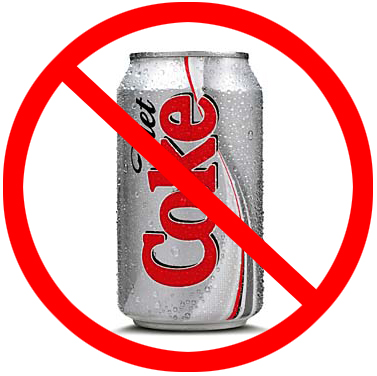Cavegirl Jane Needs
So while you'll often hear me ranting and raving about getting back to our caveman roots in regards to nutrition, lifestyle, seasons, and movement patterns, our modern world offers some pretty damn cool things. Mountain bikes? Check. Crossfit? CHECK. Computers? Huge Check!
Problem is, not all the cool things are good for us, but are so essential and integrated in out lives now, there's no going back. One of these would be computers. Why the negativitiy? Computers offer the ability to have instant information and communicate with anyone, anywhere, and share ideas& thoughts.
Sleep, cavegirl Jane. That's the problem. Staring into a brightly lit computer screen affects your circadian rhythm, and not just because of lack of sleep! (although that's a biggy). One of the main players in our biological clock is big 'ol Mama Sol, the sun. When it gets dark, photo receptors in our brain say "Hey! Go to sleep", and melatonin, a sleep regulation hormone, is secreted. When the sun rises, the inverse happens. The light from your monitor, (and your fixtures in your house) mess up this secretion. This is where F.Lux comes in.
F.Lux is a program that's designed to change the color patterns, or "warmth" of your computer screen, based on the time of day, and reduce the stimulating wavelengths at night. It's free, it's insanely easy to install, and it automatically adjusts for geographical location. I've been using it for a few months now, and I love it. Modern Tech tuned to our Primal DNA!
Even Diet Soda Sucks
FASEB J. 2010 Apr 23. [Epub ahead of print]
Dietary and genetic evidence for phosphate toxicity accelerating mammalian aging.
*Department of Oral Medicine, Infection, and Immunity, Harvard School of Dental Medicine, Boston, Massachusetts, USA; andDepartment of Pathology, Nagasaki University Graduate School of Biomedical Sciences, Nagasaki, Japan.
Abstract
Identifying factors that accelerate the aging process can provide important therapeutic targets for slowing down this process. Misregulation of phosphate homeostasis has been noted in various skeletal, cardiac, and renal diseases, but the exact role of phosphate toxicity in mammalian aging is not clearly defined. Phosphate is widely distributed in the body and is involved in cell signaling, energy metabolism, nucleic acid synthesis, and the maintenance of acid-base balance by urinary buffering. In this study, we used an in vivo genetic approach to determine the role of phosphate toxicity in mammalian aging. Klotho-knockout mice (klotho) have a short life span and show numerous physical, biochemical, and morphological features consistent with premature aging, including kyphosis, uncoordinated movement, hypogonadism, infertility, severe skeletal muscle wasting, emphysema, and osteopenia, as well as generalized atrophy of the skin, intestine, thymus, and spleen. Molecular and biochemical analyses suggest that increased renal activity of sodium-phosphate cotransporters (NaPi2a) leads to severe hyperphosphatemia in klotho mice. Genetically reducing serum phosphate levels in klotho mice by generating a NaPi2a and klotho double-knockout strain resulted in amelioration of premature aging-like features. The NaPi2a/klotho double-knockout mice regained reproductive ability, recovered their body weight, reduced their organ atrophy, and suppressed ectopic calcifications, with the resulting effect being prolonged survival. More important, when hyperphosphatemia was induced in NaPi2a/klotho mice by feeding with a high-phosphate diet, premature aging-like features reappeared, clearly suggesting that phosphate toxicity is the main cause of premature aging in klotho mice. The results of our dietary and genetic manipulation studies provide in vivo evidence for phosphate toxicity accelerating the aging process and suggest a novel role for phosphate in mammalian aging.PMID: 20418498 [PubMed - as supplied by publisher]
Okay, so I realize there's a lot of gobbley-gook, and it's a study done on mice with some really, REALLY bad genetics. But here's the simplified kicker take-home: Diet soda ain't benign, folks. Take a look at the ingredients next time you're chugging a can of Diet Shight. Phosphoric acid? Straight from the Editor-in-Chief of the Federation of American Societies for Experimental Biology: "Soda is the caffeine delivery vehicle of choice for millions of people worldwide, but comes with phosphorous as a passenger" said Gerald Weissmann, M.D., Editor-in-Chief of the FASEB Journal. "This research suggests that our phosphorous balance influences the aging process, so don't tip it."
I'm going to guess he has aerobic capacity, too.
Eur J Appl Physiol. 2010 Apr 28. [Epub ahead of print]
10 or 30-s sprint interval training bouts enhance both aerobic and anaerobic performance.
Exercise Nutrition Research Laboratory, Faculty of Health Sciences, School of Kinesiology, 2235 3M Centre, The University of Western Ontario, London, ON, N6A 3K7, Canada, thazell@uwo.ca.
Abstract
We assessed whether 10-s sprint interval training (SIT) bouts with 2 or 4 min recovery periods can improve aerobic and anaerobic performance. Subjects (n = 48) were assigned to one of four groups [exercise time (s):recovery time (min)]: (1) 30:4, (2) 10:4, (3) 10:2 or (4) control (no training). Training was cycling 3 week(-1) for 2 weeks (starting with 4 bouts session(-1), increasing 1 bout every 2 sessions, 6 total). Pre- and post-training measures included: VO(2max), 5-km time trial (TT), and a 30-s Wingate test. All groups were similar pre-training and the control group did not change over time. The 10-s groups trained at a higher intensity demonstrated by greater (P < 0.05) reproducibility of peak (10:4 = 96%; 10:2 = 95% vs. 30:4 = 89%), average (10:4 = 84%; 10:2 = 82% vs. 30:4 = 58%), and minimum power (10:4 = 73%; 10:2 = 69%; vs. 30:4 = 40%) within each session while the 30:4 group performed ~2X (P < 0.05) the total work session(-1) (83-124 kJ, 4-6 bouts) versus 10:4 (38-58 kJ); 10:2 (39-59 kJ). Training increased TT performance (P < 0.05) in the 30:4 (5.2%), 10:4 (3.5%), and 10:2 (3.0%) groups. VO(2max) increased in the 30:4 (9.3%) and 10:4 (9.2%), but not the 10:2 group. Wingate peak power kg(-1) increased (P < 0.05) in the 30:4 (9.5%), 10:4 (8.5%), and 10:2 (4.2%). Average Wingate power kg(-1) increased (P < 0.05) in the 30:4 (12.1%) and 10:4 (6.5%) groups. These data indicate that 10-s (with either 2 or 4 min recovery) and 30-s SIT bouts are effective for increasing anaerobic and aerobic performance.PMID: 20424855 [PubMed - as supplied by publisher]
Now this would have been a really cool study had they had a control group that did nothing but LSD (long, slow distance); I'm going to hazard a guess that VO2 and 5km TT would have been pretty much equal, but the LSD group would have shit the bed on the Wingate test.
Personally, I know one of the most intense training sessions I've ever had has been 100mx5 sprints, full recovery between. Yeah, that's a whopping 75s of work. But I was sore for days, and the last couple of sprints were brutally hard.
Various Training Sessions
May 9th, 11:30, CFLA
Yoga---Yup, yoga. I don't know if I've mentioned it here before, but we are lucky enough to have a great yoga instructor come into Crossfit on Sundays for an hour. I went in with reluctance and skepticism the first time, but last Sunday was my 3rd session, and I LOVE it. It's a 180 degree turn from the 3-2-1 GO, or lift-heavy-shit that normally encompasses my training. It's refreshing, it's relaxing, and it's hard, but in a different way. Love it.
May 10th, 1:30PM, CFLA
I had the conundrum of either doing "Grace" (30 clean&jerks, 135#, for time) or 1000m sprint rows x5 after coaching at 11 and 12. Well, luckily Coach Fyfe rolled in at 1:30 just as I was warming up my C&J, and saved me from my problem.
4 Rounds for Time:
20 Double Unders
15 Thrusters, 75#
400m run
11:57. Double unders were cake, thrusters, for being stupidly light, were the killer for me, as I knew they would. Dave caught up to me in rounds 3 and 4 because I had to fractionate them. Luckily, although I can't run worth shit, I can sprint 100m damn fast. :)
May 11th, CFLA, NOON
Heather, one of the owners, was super cool and decided to stick around for the 12 class after she trained at 11---it's a very rare thing when I get to train with others, so I jumped at it. Having other folks around makes me push a lot harder, and I felt it after this session:
500 m row for time: 1:25.8. !!!!! Massive, HUGE PR. I was blown away by this, as it was totally unexpected, at least mentally. I held a 1:20/500m for a few seconds, and 1:21-1:22 for the first 200m. Very, VERY pleased with this. I'm currently tied for first place on the Concept2 International Rankings for my age and weight, unofficially. Ha!
Proof Of Pain
rest 3 minutes
AMRAP in 3:00 Minutes
5 Box Jumps 24
5 KBS 70
6 Rounds. Kettlebell wasn't too bad, but 24" box jumps slowed me down
Rest 3 Minutes
AMRAP in 3:00 Minutes
5 Toes to Bar
5 Reverse Grip Paralette Push Ups
6+ 5. I couldn't find my kip on toes to bar at first, and then lost it near the end as I fatigued, which cost me a 7 rounder.
May 13th, U of L
Indoor rock climb x2 hours.
Worked specifically on a 5.10c route that has been getting the best of me; there's a couple of tough crux moves, but I think I have it nailed. Next time, I'm going to cleanly complete it.
May 14th, 2PM
Despite the option to take a run at Christine (3 rds, 500m row, 12 BW deadlifts, 21 Box jumps), one of my fav named Crossfit workouts, I'M GOING MOUNTAIN BIKING. It's damn beautiful out, and I tuned my Santa Cruz up at the firehall yesterday.













